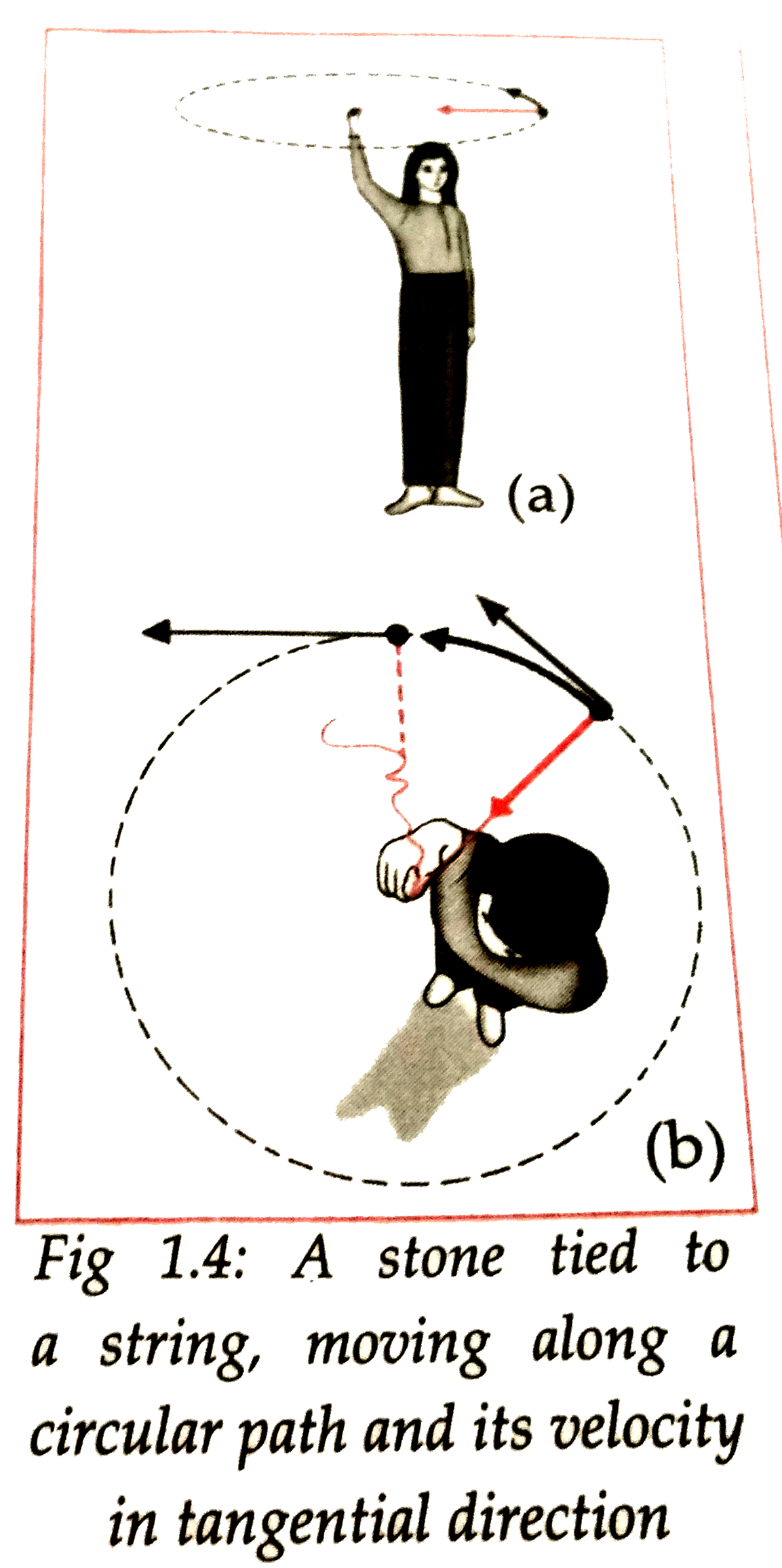Read the following paragraph carefully and answer the following:
Tie a stone to one end of a string. Take the other end in your hand and rotate the string so that the stone moves along a circle.
As long as we are holding the string, we are pulling the stone towards us i.e. towards the centre of the circle and are appliying a force towards it. The force stops acting on it if we release the string. In this case, the stone will fly off along a straight line which is the tangent to the circle at the position of the stone when the string is released, because that the directionn of its velocity at that instant of time. You may recall a similar activity in which a 5 rupee coin kept on a rotating circular disc flies off the disc along the tangent to the disc. Thus, a force acts on any object moving along a circle and it is directed towards the centre of the circle. This is called the Centripetal force.

What is centripetal force?Solution in Tamil
The force exerted towards the centre of the circle on an object moving along a circular path is called centripetal force. It is a centre seeking force.
Similar Questions
Tia a stone to one end of a string. Take the other end in your hand and rotate the string so that the stone moves along a circle as shown in figure 1.1 (a). Are you applying any force on the stone? In which direction is this force acting ? How will you stop this force from acting ? What will be the effect on the stone ?

View SolutionRead the following paragraph carefully and answer the following: Tie a stone to one end of a string. Take the other end in your hand and rotate the string so that the stone moves along a circle. As long as we are holding the string, we are pulling the stone towards us i.e. towards the centre of the circle and are appliying a force towards it. The force stops acting on it if we release the string. In this case, the stone will fly off along a straight line which is the tangent to the circle at the position of the stone when the string is released, because that the directionn of its velocity at that instant of time. You may recall a similar activity in which a 5 rupee coin kept on a rotating circular disc flies off the disc along the tangent to the disc. Thus, a force acts on any object moving along a circle and it is directed towards the centre of the circle. This is called the Centripetal force. The impressed force on the same is in which direction?
View SolutionRead the following paragraph carefully and answer the following: Tie a stone to one end of a string. Take the other end in your hand and rotate the string so that the stone moves along a circle. As long as we are holding the string, we are pulling the stone towards us i.e. towards the centre of the circle and are appliying a force towards it. The force stops acting on it if we release the string. In this case, the stone will fly off along a straight line which is the tangent to the circle at the position of the stone when the string is released, because that the directionn of its velocity at that instant of time. You may recall a similar activity in which a 5 rupee coin kept on a rotating circular disc flies off the disc along the tangent to the disc. Thus, a force acts on any object moving along a circle and it is directed towards the centre of the circle. This is called the Centripetal force. What happens if the string is released?
View Solutionयदि हम एक पत्थर के टुकड़े को किसी डोरी से बांधकर क्षैतिज वृत्ताकार मार्ग में घुमाएँ तो डोरी को हमें अंदर की ओर खींचे रखना पड़ता है , क्यों ?
View SolutionThe centripetal force in the string to a stone rotating in a circle with the help of a string is-
View Solutionकिसी डोरी के सिरे से पत्थर बांधकर बड़ी लम्बाई के सिरे से पत्थर बांधकर घुमने की अपेक्षा सरल क्यों होता है ?
View SolutionA stone of mass m tied to a string of length l is rotated in a circle with the other end of the string as the centre. The speed of the stone is v. If the string breaks, the stone will move
View Solution